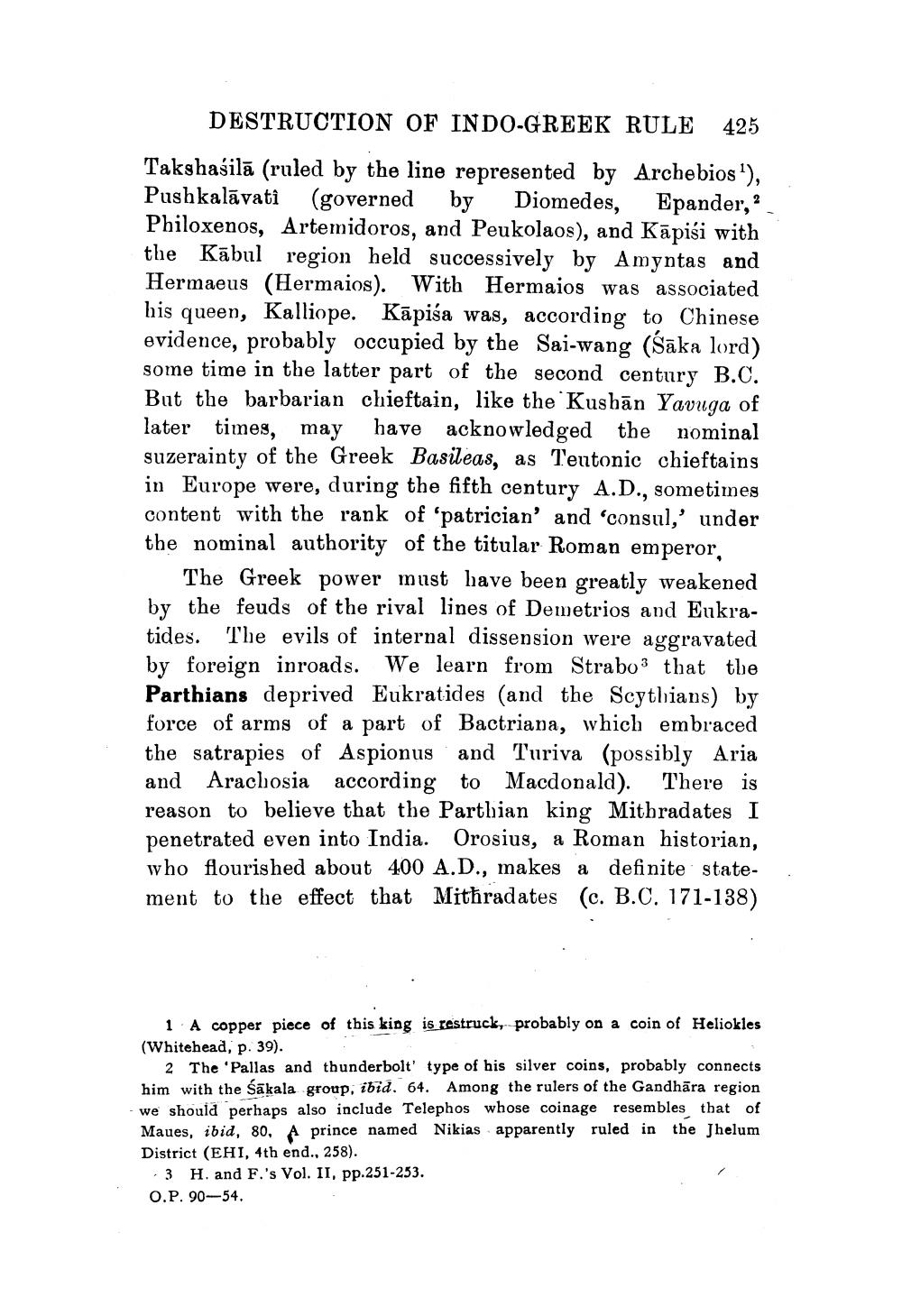________________
DESTRUCTION OF INDO-GREEK RULE 425 Takshasilā (ruled by the line represented by Archebios“), Pushkalāvatî (governed by Diomedes, Epander, Philoxenos, Artemidoros, and Peukolaos), and Kāpiši with the Kābul region held successively by Amyntas and Hermaeus (Hermaios). With Hermaios was associated his queen, Kalliope. Kāpisa was, according to Chinese evidence, probably occupied by the Sai-wang (sāka lord) some time in the latter part of the second century B.C. But the barbarian chieftain, like the Kushān Yavuga of later times, may have acknowledged the nominal suzerainty of the Greek Basileas, as Teutonic chieftains in Europe were, during the fifth century A.D., sometimes content with the rank of 'patrician' and 'consul,' under the nominal authority of the titular Roman emperor,
The Greek power must have been greatly weakened by the feuds of the rival lines of Demetrios and Eukratides. The evils of internal dissension were aggravated by foreign inroads. We learn from Strabo3 that the Parthians deprived Eukratides (and the Scythians) by force of arms of a part of Bactriana, which embraced the satrapies of Aspionus and Turiva (possibly Aria and Arachosia according to Macdonald). There is reason to believe that the Parthian king Mithradates I penetrated even into India. Orosius, a Roman historian. who flourished about 400 A.D., makes a definite statement to the effect that Mitħradates (c. B.C. 171-138)
1 A copper piece of this king is restruck, probably on a coin of Heliokles (Whitehead, p. 39).
2 The 'Pallas and thunderbolt' type of his silver coins, probably connects him with the Sakala group, ibid. 64. Among the rulers of the Gandhāra region - we should perhaps also include Telephos whose coinage resembles that of Maues, ibid, 80, A prince named Nikias apparently ruled in the Jhelum District (EHI, 4th end., 258).
3 H. and F.'s Vol. II, pp.251-253. O.P. 90-54.




